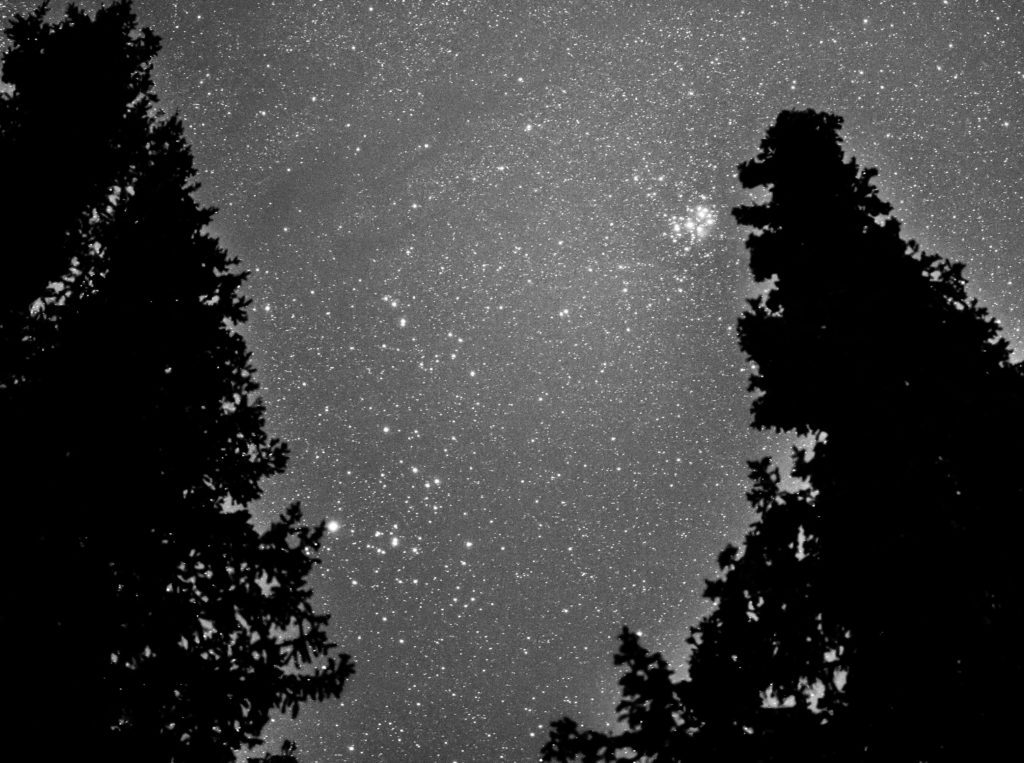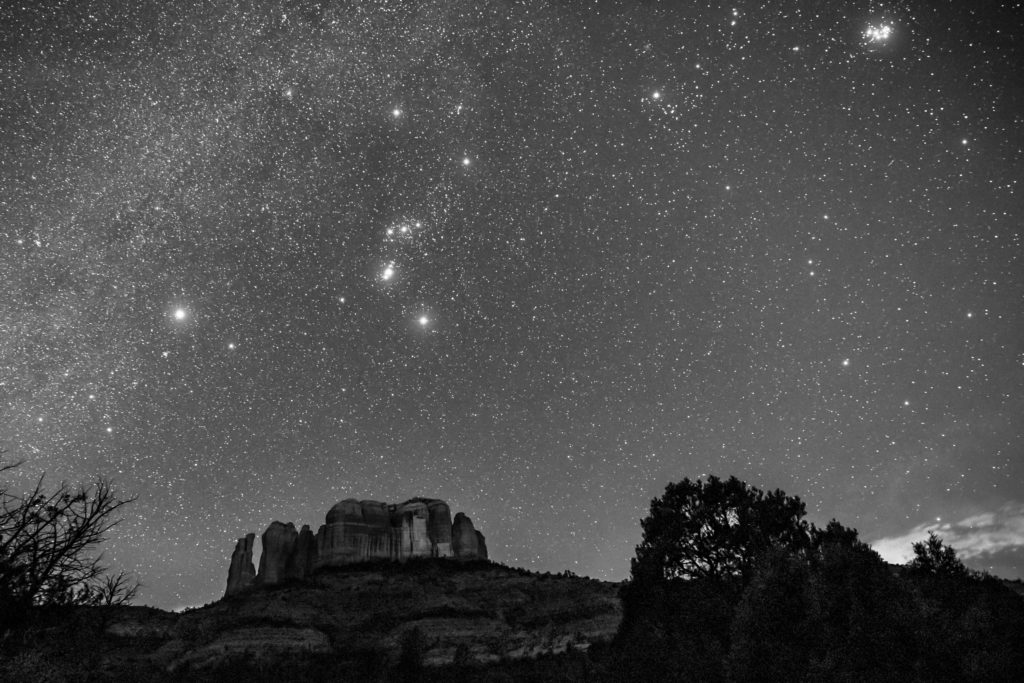
It’s the second-closest star cluster to Earth, and it appears so large that many new stargazers don’t even know it’s a true star cluster. But the Hyades, which make up the V-shaped head of the constellation Taurus, the Bull, is a resplendent collection of young, mostly blue-white stars that are lovely to the unaided eye and a wonder to behold in a pair of binoculars.
Often overshadowed by the smaller and more famous and apparently smaller Pleiades to the west, the Hyades are visible high in the northern sky this time of year. They’re visible from the southern hemisphere, too, perhaps 20° above the northern horizon just after sunset in South Africa, Australia, and New Zealand. An easy way to spot the Hyades? Follow a line from Orion’s Belt to the northwest until you see the little V with the bright orange star Aldebaran at one apex and keep going to get to the Pleiades. Follow Orion’s Belt in the other direction and you’ll find the bright blue-white star Sirius, the brightest star in the sky. The image below shows you what to look for.
Because of their prominence, the Hyades have been observed closely since antiquity. The cluster’s name comes from the Greek legend of the seven Hyads, the daughters of the titan Atlas and Aethra. Atlas, a busy man, had seven more daughters by another wife, Pleione. These daughters were called the Pleiades. So by legend, the Pleiades and the Hyades are half-sisters. Unlike the Pleiades star cluster, the stars of the Hyades are not named after the sisters. And the Hyades contains some twenty stars visible to the naked eye; the Pleiades have just six.
The Romans called the Hyades Sidus Hyantis, the “Raining Stars” because legend tells the Hyads rained tears on Earth after the death of their brother Hyas. The appearance of these stars also coincided with the rainy season around the Mediterranean.

The center of mass of the Hyades is just 151 light years away. So save for the Ursa Major moving group, which makes up much of the Big Dipper, the Hyades ranks as the closest open star cluster to Earth. Astronomers have carefully measured the apparent motion of the Hyades across the sky and determined it moves away from Earth and toward a point just east of the bright star Betelgeuse. Fifty million years from now, the cluster will appear dim and small, just 0.5° across.
The presence of many orange-giant stars suggests the Hyades have been around for some 700 million years. That’s old for an open cluster. It’s likely no coincidence that the Hyades are about the same age as the Praesepe star cluster (M44) in the constellation Cancer. The two clusters have a common motion through space, and likely formed together out of the same massive cloud of gas and dust.
The Hyades appears to be dominated by the bright orange star Aldebaran, which appears as the “eye” of the bull and the brightest star in the constellation Taurus. But Aldebaran is not associated with the Hyades. It’s much closer, just 65 light years away.
You need no telescope to observe the Hyades. The cluster is spread out over a patch of sky as large as your fist extended at arms length, and 11 stars shine at magnitude 4.5 or brighter. A modest pair of binoculars reveals dozens more stars, and the whole cluster is quite dazzling. Once you locate the group in the sky the map below will help you find your way around. Check your star map, or use this link to sort out one star from another in the Hyades. The cluster is also cataloged formally as Collinder 50, Melotte 25, and most recently as Caldwell 41.
Share This: